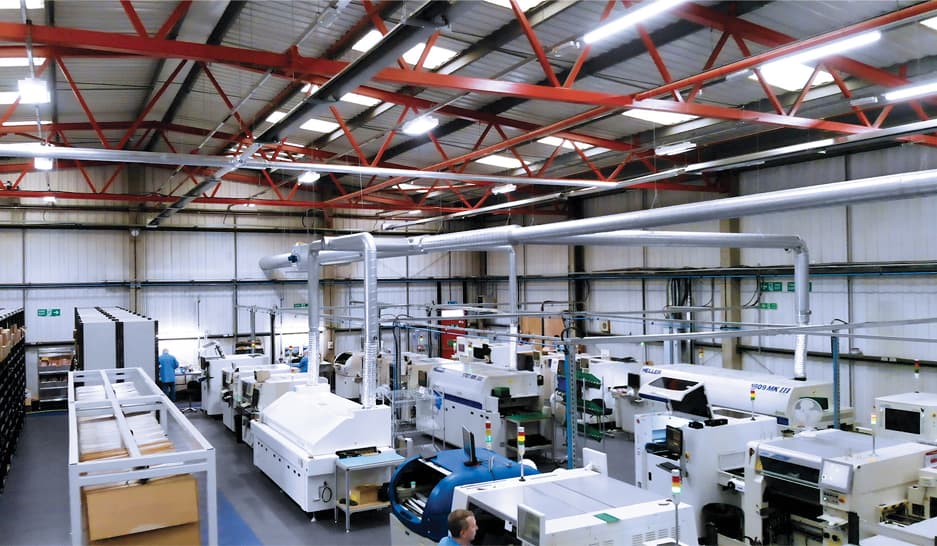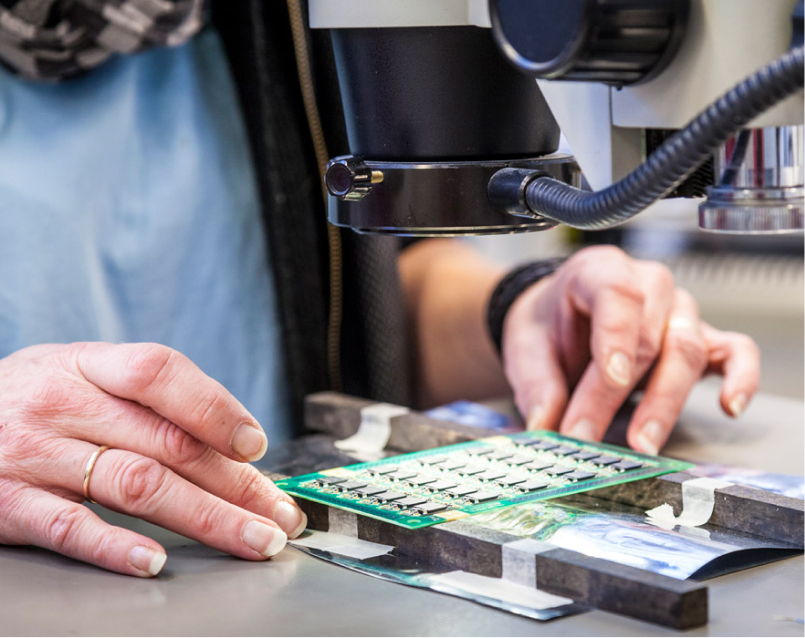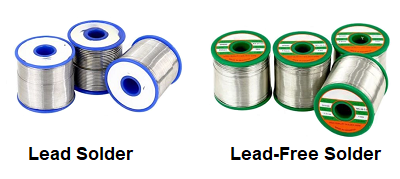In the fast-evolving world of electronic manufacturing, ensuring quality and reliability is more critical than ever. One of the key ways to achieve this is through lead-free assembly certification. This certification guarantees that products meet strict environmental and safety standards while maintaining high performance. Whether you're looking for lead-free assembly certification training, lead-free assembly certification IPC standards, or details on lead-free soldering certification, this guide will walk you through everything you need to know to stay compliant and competitive in the industry.
At ALLPCB, we understand the importance of adhering to global standards and delivering top-notch quality. In this blog, we’ll dive deep into the significance of lead-free assembly certification, the processes involved, and how it impacts the reliability of electronic products. Let’s explore this essential topic step by step.
What Is Lead-Free Assembly Certification?
Lead-free assembly certification is a formal recognition that a manufacturer or assembler follows specific guidelines to produce electronic components without using lead-based materials. Lead, once a common material in soldering due to its low melting point and ease of use, has been largely phased out due to its harmful environmental and health effects. Regulations like the Restriction of Hazardous Substances (RoHS) directive in the European Union have driven the shift to lead-free alternatives.
This certification ensures that the materials, processes, and final products meet international standards for safety and environmental responsibility. It often involves rigorous training, audits, and adherence to industry benchmarks such as those set by the Institute of Printed Circuits (IPC). For manufacturers, achieving certification is not just about compliance—it’s about building trust with customers and ensuring the durability of their products in demanding applications.
Why Lead-Free Assembly Certification Matters in Electronic Manufacturing
The move to lead-free assembly is more than just a regulatory requirement; it’s a commitment to sustainability and quality. Here are some key reasons why certification is vital:
- Environmental Safety: Lead is toxic and can contaminate soil and water if not disposed of properly. Lead-free assembly reduces these risks, aligning with global efforts to minimize hazardous waste.
- Health Protection: Workers in the electronics industry are exposed to soldering materials daily. Using lead-free alternatives minimizes health risks associated with lead exposure, such as neurological damage.
- Market Access: Many regions, especially in Europe, require RoHS compliance for electronic products to be sold. Certification ensures access to these markets without legal or financial penalties.
- Product Reliability: Lead-free soldering, when done correctly, can offer comparable or even superior reliability to traditional lead-based methods, especially in high-temperature environments.

Understanding Lead-Free Assembly Certification Training
For manufacturers and technicians, lead-free assembly certification training is the first step toward compliance and expertise. This training focuses on teaching the skills needed to work with lead-free materials, which often have different properties compared to traditional solders. For instance, lead-free solders typically have higher melting points (around 217-220°C for common tin-silver-copper alloys compared to 183°C for lead-tin solders), requiring adjustments in equipment and techniques.
Training programs cover critical areas such as:
- Proper handling of lead-free alloys to avoid issues like tin whiskers, which can cause short circuits.
- Adjusting thermal profiles for soldering to prevent damage to components due to higher temperatures.
- Identifying and inspecting lead-free solder joints for quality and reliability using visual and X-ray methods.
By investing in lead-free assembly certification training, companies ensure their workforce is equipped to handle the challenges of modern electronics production while maintaining high-quality output.
Lead-Free Assembly Certification IPC Standards
The IPC is a globally recognized authority in setting standards for electronic manufacturing. Their guidelines for lead-free assembly certification, often referred to as lead-free assembly certification IPC, are widely adopted by the industry. Some of the key IPC standards related to lead-free assembly include:
- IPC-A-610: This standard defines the acceptability criteria for electronic assemblies, including lead-free solder joints. It provides detailed visuals and criteria for inspecting solder quality across different product classes (Class 1 for general electronics, Class 2 for dedicated service, and Class 3 for high-reliability applications like aerospace).
- J-STD-001: This standard outlines the requirements for soldered electrical and electronic assemblies. It includes specific guidelines for lead-free soldering processes, ensuring consistency and reliability in manufacturing.
Adhering to IPC standards during certification ensures that manufacturers produce assemblies that meet the strictest quality benchmarks. For instance, a Class 3 product might require a solder joint fillet height of at least 75% of the component lead height to ensure durability under extreme conditions. These precise measurements and criteria are what make IPC standards a cornerstone of lead-free assembly certification.

The Role of Lead-Free Assembly Certification Audit
A lead-free assembly certification audit is a critical part of the certification process. During an audit, an independent body evaluates a manufacturer’s processes, materials, and documentation to ensure compliance with lead-free standards. This often includes:
- Reviewing material safety data sheets (MSDS) to confirm that no lead-containing substances are used.
- Inspecting soldering equipment to ensure it can handle the higher temperatures required for lead-free alloys without damaging components.
- Verifying that employees have undergone proper lead-free assembly certification training and follow best practices.
A successful audit not only validates a company’s commitment to lead-free practices but also identifies areas for improvement. For example, if an audit reveals inconsistent thermal profiles during soldering—say, a peak temperature of 240°C instead of the recommended 235°C for a specific alloy—it could lead to component stress or failure. Addressing such issues during an audit helps prevent costly defects down the line.
Lead-Free Soldering Certification: A Key Component
Lead-free soldering certification is a specialized subset of lead-free assembly certification, focusing specifically on the soldering process. Since soldering is the backbone of electronic assembly, mastering lead-free soldering techniques is essential for producing reliable products.
This certification typically involves hands-on training to address challenges like:
- Higher Melting Points: As mentioned earlier, lead-free solders require temperatures up to 40°C higher than traditional solders, necessitating precise control to avoid overheating sensitive components.
- Wetting Issues: Lead-free solders can have poorer wetting properties, meaning they don’t spread as easily on surfaces. Technicians learn to use appropriate fluxes and techniques to overcome this.
- Mechanical Stress: Lead-free solder joints can be more brittle, increasing the risk of cracking under thermal or mechanical stress. Certification programs teach methods to minimize these risks, such as optimizing joint design.
With lead-free soldering certification, technicians gain the skills to create strong, reliable connections that meet both environmental and performance standards.
Lead-Free PCB Design Certification: Building the Foundation
While assembly and soldering are crucial, the design of the printed circuit board (PCB) itself plays a significant role in the success of lead-free manufacturing. Lead-free PCB design certification focuses on ensuring that the board layout and material choices are compatible with lead-free processes.
Key considerations in lead-free PCB design include:
- Thermal Management: Lead-free soldering requires higher temperatures, which can stress PCB materials. Designers must select substrates with higher glass transition temperatures (Tg), often above 170°C, to withstand the heat.
- Pad and Trace Design: Lead-free solders may not flow as easily, so pad sizes and trace widths must be adjusted—sometimes increasing pad diameters by 10-15%—to ensure proper solder joint formation.
- Component Compatibility: Not all components are rated for the temperatures used in lead-free soldering. Designers must specify components with appropriate thermal ratings, such as capacitors that can handle up to 260°C for short durations.
Certification in lead-free PCB design ensures that the foundation of the electronic product is optimized for the entire manufacturing process, reducing the risk of failures during assembly or in the field.

Benefits of Partnering with a Certified Manufacturer
Choosing a certified manufacturer for your electronic projects offers numerous advantages. At ALLPCB, we prioritize lead-free assembly certification to deliver the highest quality products to our clients. Here’s what you gain by working with a certified partner:
- Assured Compliance: Certified manufacturers guarantee that your products meet global regulations like RoHS, avoiding potential legal or market entry issues.
- Enhanced Reliability: Certification processes ensure that every step—from design to assembly—meets strict quality standards, resulting in durable and dependable electronics.
- Expert Support: Certified teams have undergone extensive training and audits, providing you with expert guidance on everything from material selection to final testing.
By partnering with a company that values certification, you can focus on innovation while trusting that your manufacturing needs are handled with precision and care.
Challenges in Achieving Lead-Free Assembly Certification
While the benefits are clear, achieving lead-free assembly certification is not without challenges. Manufacturers often face hurdles such as:
- Cost of Transition: Upgrading equipment and training staff for lead-free processes can be expensive, especially for smaller companies. New soldering stations capable of reaching 260°C or higher may cost thousands of dollars.
- Learning Curve: Technicians accustomed to traditional soldering methods may need time to adapt to the nuances of lead-free materials, potentially leading to initial quality issues.
- Supply Chain Complexity: Ensuring that all components and materials in the supply chain are lead-free can be difficult, especially when dealing with multiple suppliers.
Despite these challenges, the long-term benefits of certification—such as improved product quality and market competitiveness—far outweigh the initial obstacles.
How to Get Started with Lead-Free Assembly Certification
If you’re ready to pursue lead-free assembly certification for your team or company, here are the steps to follow:
- Research Training Programs: Look for reputable programs that offer lead-free assembly certification training, focusing on both theoretical knowledge and hands-on skills.
- Understand IPC Standards: Familiarize yourself with key standards like IPC-A-610 and J-STD-001 to ensure your processes align with industry benchmarks.
- Prepare for Audits: Conduct internal reviews of your materials, equipment, and workflows to identify gaps before a formal lead-free assembly certification audit.
- Partner with Experts: Work with certified manufacturers or consultants who can guide you through the certification process and help implement best practices.
At ALLPCB, we’re committed to supporting our clients at every stage of their journey toward lead-free certification, offering resources and expertise to streamline the process.
Conclusion: The Future of Lead-Free Assembly in Electronics
Lead-free assembly certification is more than a regulatory checkbox—it’s a commitment to quality, safety, and sustainability in electronic manufacturing. By investing in lead-free assembly certification training, adhering to lead-free assembly certification IPC standards, and preparing for lead-free assembly certification audits, manufacturers can ensure their products meet the highest industry standards. Additionally, certifications in lead-free soldering and lead-free PCB design further strengthen the reliability and performance of electronic assemblies.
As the industry continues to evolve, staying ahead of environmental regulations and customer expectations will be key to success. At ALLPCB, we’re dedicated to leading the way in lead-free manufacturing, providing our clients with certified solutions that deliver exceptional results. Whether you’re a designer, engineer, or manufacturer, embracing lead-free practices is an investment in a safer, more reliable future for electronics.
 ALLPCB
ALLPCB







